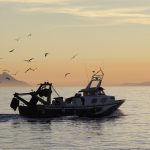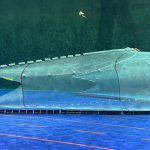Commercial seafood buyers and consumers around the world who rely on MSC to provide assurance that they are sourcing sustainably caught seafood should be confident that the Alaska pollock fishery continues to be certified to the MSC’s widely accepted and rigorous scientific standard.
Under the MSC certification program, independent, objective certifiers using teams of qualified scientists assess the health of the stock, the impact of the fishery on the ecosystem and the management system that oversees the fishery. The Alaska pollock fishery became MSC-certified in 2005 after a rigorous review and undergoes annual audits to assure it continues to meet the MSC standard.
Alaska pollock stocks are currently exhibiting a cyclical downturn, which is natural in wild fish populations and in this case carefully studied by fishery scientists. The Alaska pollock fishery has a reputation as one of the world’s best managed fisheries because of both its tracking and reaction to the fluctuations of the fish population. In 2008, the North Pacific Fisheries Management Council (NPFMC), the entity responsible for managing the fishery, took action to reduce the allowable catch to account for the cyclical downturn. The NPFMC is currently looking at a further reduction for 2009.
The Council’s management actions are based on proposals made by a committee of scientists that continually monitors the size of the population. Having a management system that looks at the best science and makes management decisions that are precautionary is among key criteria for a fishery to qualify for and maintain MSC certification.
Facts about the Alaska pollock fishery:
According to many fishery scientists, the Alaska pollock resource has been harvested sustainably for decades.
Pollock fishery managers have historically taken a precautionary approach and set annual harvest levels that are actually less than the acceptable biological catch levels set by a panel of federal, state and academic scientists.
There is 100 percent observer coverage, with each vessel carrying 1-2 federal fishery observers to monitor and record catches and conduct scientific research; observers are also assigned to all pollock onshore processing facilities.
There is very low by-catch – pollock comprises 99.5 percent of what is caught in the net.
Significant closed areas have been established throughout the fishing grounds to protect Steller sea lion rookeries and feeding areas.
There is full utilization of the fish caught with edible portions going to seafood products and inedible portions used in non-consumable products.
In addition to this fishery being certified under the MSC program, several respected environmental organizations list pollock as “green” on their buyer guides.








